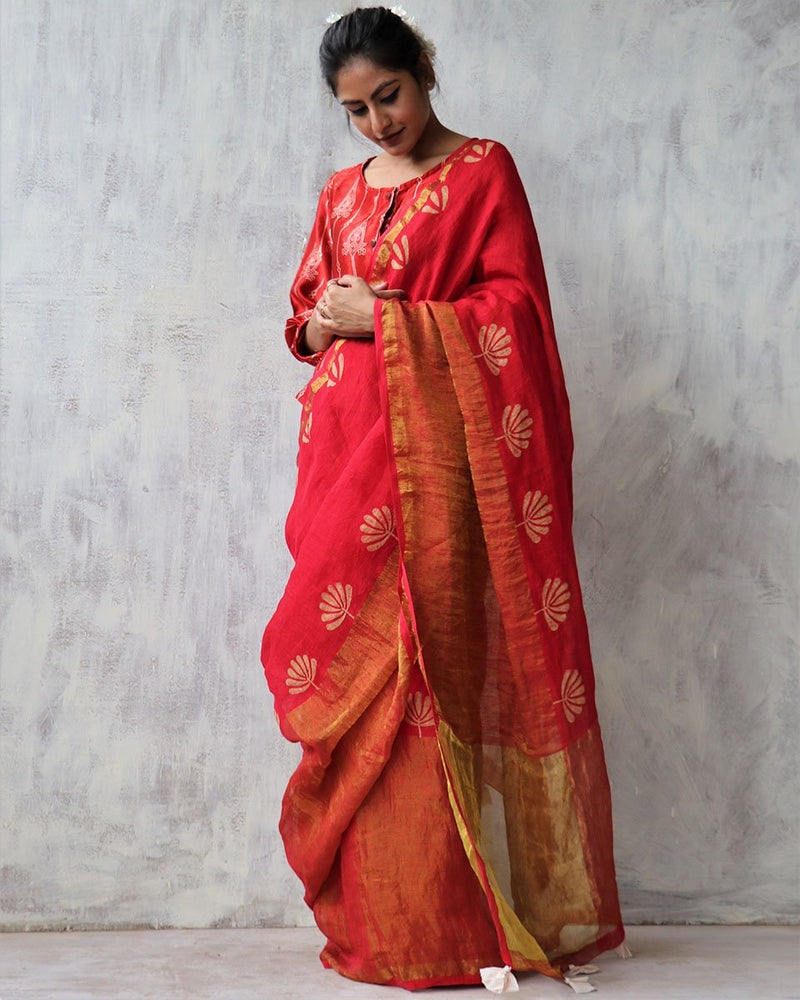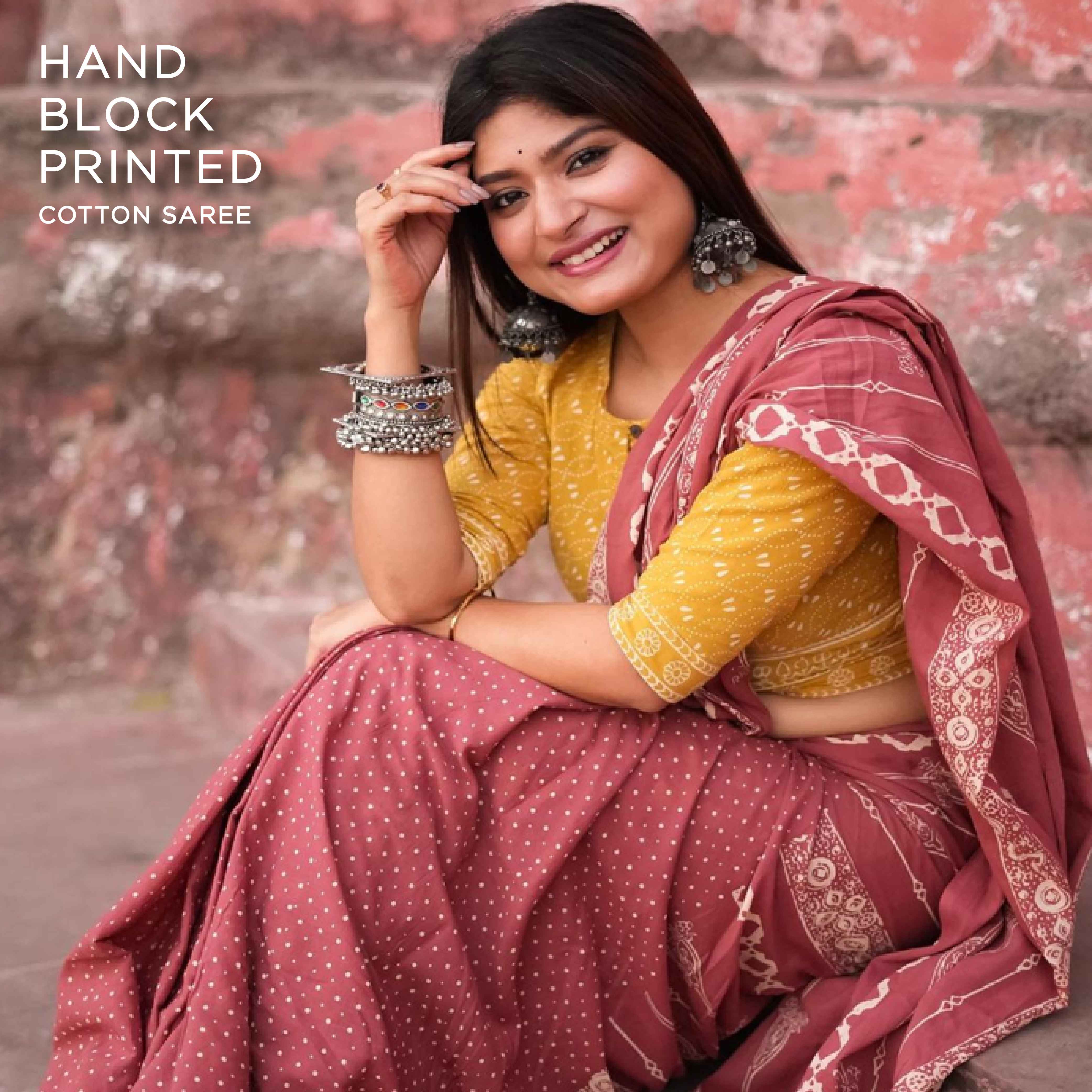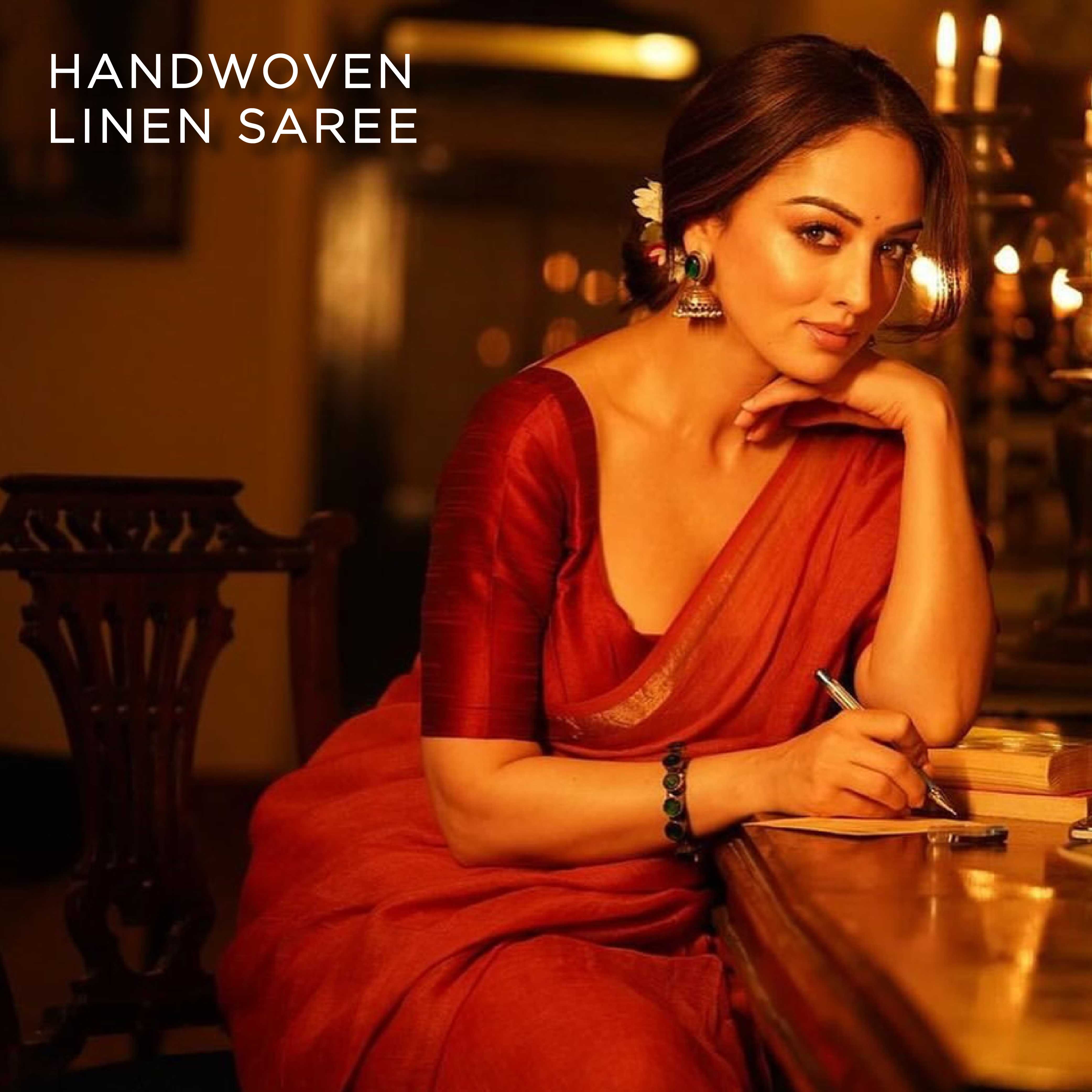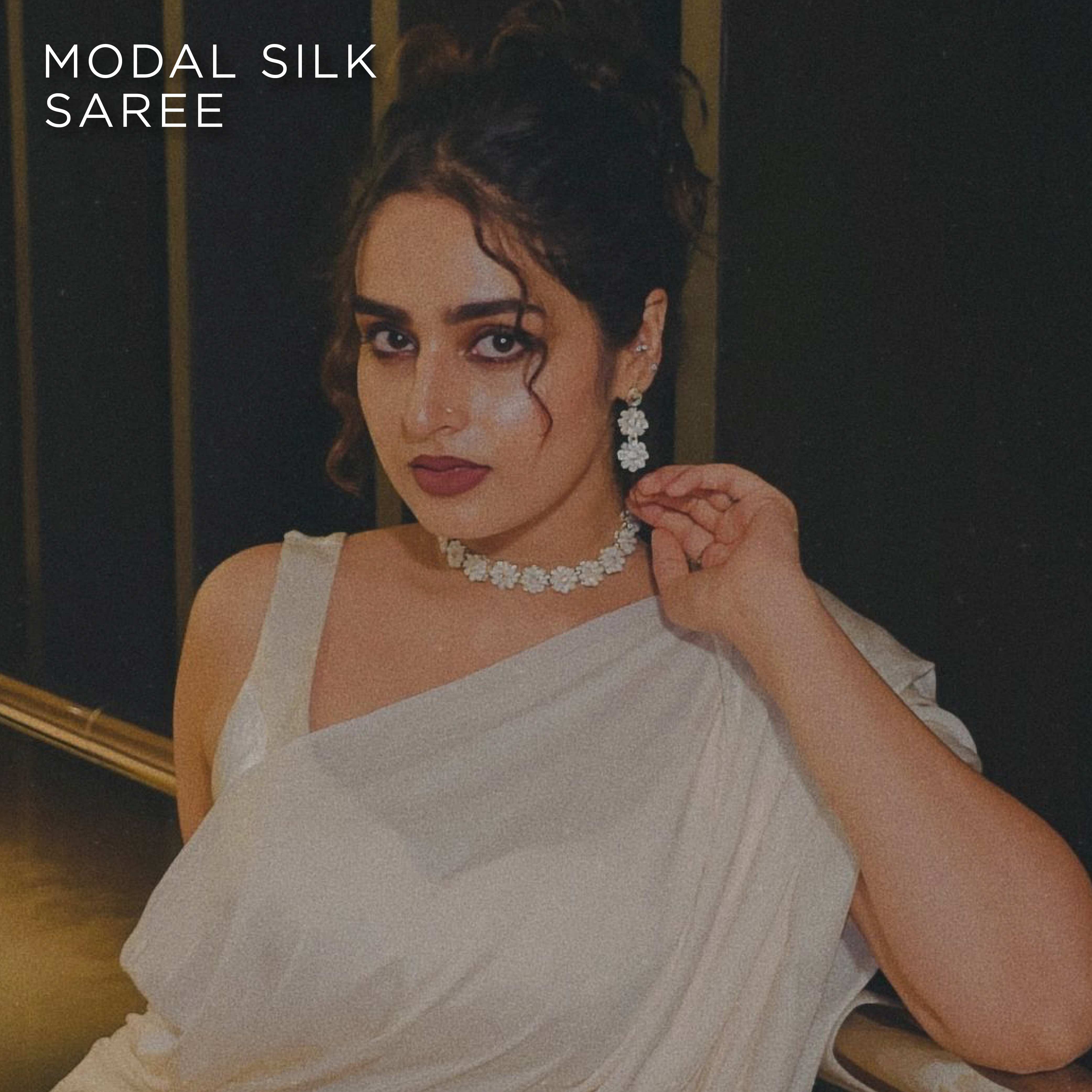Submerging in the classical style essence of our culture you'll find a queen ruling all hearts from years - the traditional Indian sarees. Being influence by thousand of years of revolution this piece of clothing still has its own charm and grace. And yet can be spotted in every wardrobe of an Indian household.
Today we will take you to the journey of diverse drapes bestowing the pride of different regions of India.
1. Athpourey from Bengal
One of the most ancient and identifiable saree-draping styles is the Bengali atpoure shari. The drape is followed by a box-pleat in the front, while pallu (veil) rested on both the shoulder. The veil comes from the back on the left shoulder first and then comes from the back on the right shoulder. Traditionally the Bengali women tied the keys of the house to the pallu over their right shoulder as head of the house.

2. Nauvari saree from Maharashtra
The draping style in Maharastra is quite unique yet practiced widely all over India. It is worn like a dhoti (loincloth), with one end going front to back between the legs, which is then tucked around the waist, while the other end or upper part is draped much like a normal saree. This particular dhoti style draping not only makes it look more graceful but also provide easy leg moment.

3. Seedha Pallu
A broadly used draping style in the state of Uttar Pradesh, Gujarat, and Odisha. This style of draping is worn by women here on an everyday basis. As this draping style allows for freehand movements and works really well for heavy-work sarees. Also, it’s the best way to showcase all the intricate designs found around the saree’s veil and border.

4. Madisaru from Tamil Nadu
A soul of Iyengar culture and the Iyer of Tamil Nadu, a Madisaru is a traditional saree style usually worn by women after getting married. However, these days the look is worn for many occasion. No blouse or petticoat is required to wear this style. It is one of the most complicated saree-draping styles. The lower half is worn like a loincloth while the upper half is pleated like a normal saree.

5. Rajasthani style
Very similar to Gujarati way of draping, the rajasthani saree style is all about encapsulating the royal era. The free end of the pallu is pinned back of the blouse by the women making the whole look more energetic.

Below are a few of our favorite block printed sarees especially selected for you. Scroll down to enroll the essence of ancient tales in your wardrobe.
 |
 |
 |
 |
 |
 |
 |
 |
 |
 |
 |
 |
 |
 |
 |
 |
 |
 |







